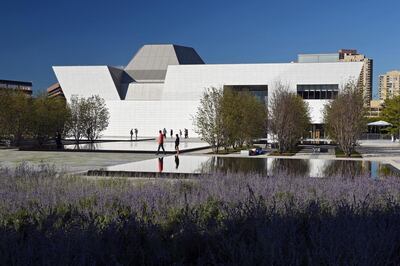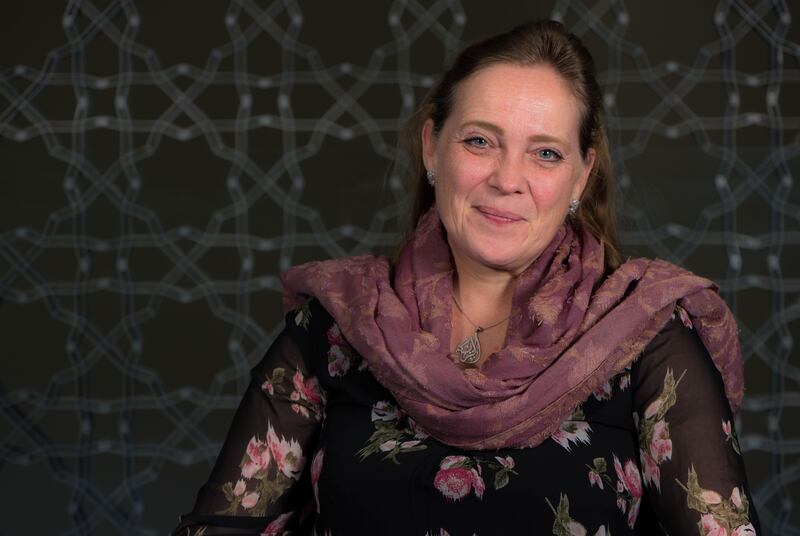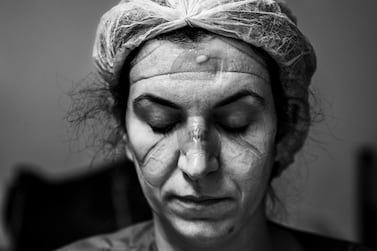“I really never saw myself as a traditional curator who focuses more on objects rather than people,” says Ulrike Al-Khamis. “For me personally, work in a museum has always been social work.”
Al-Khamis is the new director and chief executive of the Aga Khan Museum, which was founded in Toronto in 2014 by the Aga Khan.
The museum’s mandate is to showcase the contribution of Muslim civilisations as well as their interconnectedness with the world. It is the only museum in North America dedicated exclusively to Islamic culture.
Al-Khamis, who has been at the museum since 2017 and replaces Henry Kim, believes the museum’s social role can be enlarged through a more inspired use of outreach and education.
When the pandemic hit, it staged virtual tours, workshops and field trips for communities in Canada as well as abroad, such as those in Mombasa, Maputo and Hyderabad.
And before Covid-19, the museum was already well advanced in engaging Toronto’s substantial Arab and Muslim diaspora, hosting events for Canada’s Islamic Heritage Month and reaching out to teachers and schools.

But the curator also believes in the sheer power of artworks to tell stories.
A lot of her work focuses on what Al-Khamis calls “setting the objects free”, where they leave their curatorial context and become catalysts for discussions.
“Islamic art is as such an art historical discipline, and relatively niche and specialised,” she says.
“But if you use the narratives that you have within the field of Islamic art to ask contemporary questions and make new connections – if you find ways to link the historic to the contemporary – you have powerful tools to showcase the continuing relevance of your collection to people in society.
"And for that, of course, you have to be prepared to interpret your collection in very innovative and unexpected ways."
She gives the example of an Islamic plate from the 16th century, which features a floral design made of intertwining tulips. The flower has a special history in Canada, where they are a traditional gift from consulates to other nations – a tradition born of the fact that Princess Juliana of the Netherlands was moved to Ottawa during the Second World War, where she gave birth to her third daughter. When she returned to Holland, she sent thousands of tulip bulbs as a gift of gratitude.
“So where did the Dutch get the tulips from?” Al-Khamis continues. “The Dutch ultimately got the tulips through the intermediary of an Austrian ambassador to the Ottoman Empire in Istanbul in the 16th century.
"By that time, the Ottomans already had an important tulip culture, because the tulip had religious and mystical overtones, and the cultivation of the tulip was a cultural pursuit of the elite.”
The Ottomans, however, are not the end of the story: they received them from the trade intermediaries through Iran and Central Asia, where the flowers first grew.
“Here you have a story where you could either write on your label: ‘ceramic plate decorated with underglaze, coloured pigments, from Anatolia, eastern Turkey, 16th century,’” says Al-Khamis.
“Or you can write a label that highlights the cross-cultural story of the tulip and shows you how something you are so connected to today – something you love and you might have in your own front garden – actually links you back over many centuries to all these different cultures and stories and achievements.”
Al-Khamis is herself a foreigner to Islamic culture. Born in Germany, she visited Cairo on a trip with her mother as a teenager in the 1980s and fell in love with the Middle East.
She learnt Arabic when she returned to Germany, and eventually met and married an Iraqi, and later earned her PhD in Islamic metalwork at Edinburgh University.
Before moving to Toronto, she worked for 10 years at the Sharjah Museum of Islamic Civilisation, an experience she calls “one of the happiest times of my life, professionally, and as a person”.
There, she says, she was not only helping to interpret the objects of Islamic culture in intercultural ways, but learning from her local colleagues about their outlook on the cultural heritage of the Muslim world, both past and present.
One of her goals at the Aga Khan Museum will be to build bridges with international museums of a similar remit, such as the Sharjah Museum of Islamic Civilisation, Louvre Abu Dhabi or the Museum of Islamic Art in Doha.
The Aga Khan Museum is one of many art and cultural projects by the Aga Khan family. The Aga Khan is the Imam or spiritual leader of the Ismaili Muslims, and an aristocrat who could have stayed happily in the social set. Instead, he and his family have become important supporters of culture across the Islamic world.
The museum is particularly strong in works on paper, with ceramics, metalwork, glass and textiles.
It was created from the collection of the Aga Khan’s brother Prince Amyn Aga Khan, the late Prince Sadruddin Aga Khan, and his wife, Princess Catherine.
Al-Khamis’s ideas of art as social outreach also align with the new curatorial thinking around the “biography” of objects, which understands the artwork as something that changes through time – like the tulip that travels across continents.
Rather than the museum preserving these artefacts' meanings in aspic, the idea is to draw out these hidden significances as they shift, a more proactive use of the museum collection.
For the Aga Khan Museum in particular, this curatorial approach fits the museum’s mission.
“Our objects are our tools and catalysts to start conversations,” she says. “An object has so many stories, and can also be very unique. In contemplating the potential of an object to tell stories, historical facts and contemporary connections combine with visitors’ very personal associations.
"And in that, they [the visitors] themselves become the storytellers – stories around why they love an object, and its beauty, whether it reminds them of a moment or memory in their life, or a person that means a lot to them.
"It is because of this human, as well as artistic, potential that it’s so important to me to try and ‘set the objects free’ from an exclusively art-historical, curatorial narrative, and invite other, diverse voices in to contemplate and interpret their significance."







